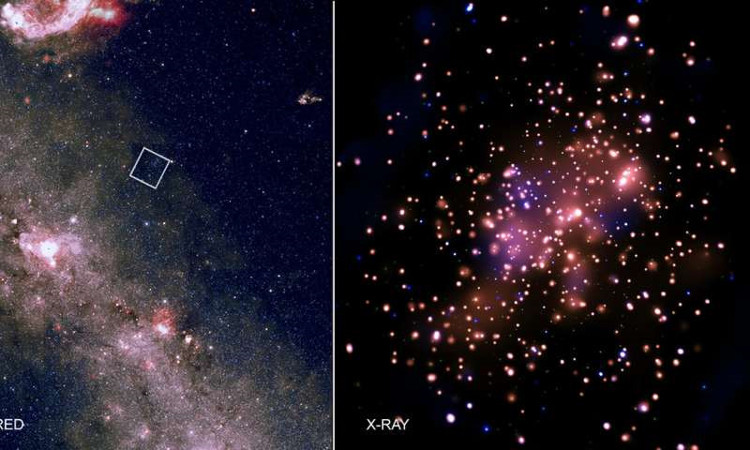Strange star family portrait under X-ray technology
By studying young star clusters, observing stellar families with technology, astronomers hope to understand more about how stars including our Sun are born .
NGC 6231 , located about 5,200 light years from Earth, is an ideal test to study a cluster of young stars, at a critical stage in its evolution.

X-ray images of NGC 6231 show a close-up of the inner area of the star cluster.(Image source: Phys).
Discovering NGC 6231 as Giovanni Battista Hodierna, an Italian mathematician and priest, he published observations of the cluster in 1654. Today's sky observer can find this cluster at southwest of the constellation Scorpius.
NASA's Chandra X-ray Observatory recently identified stars like the Young Sun in NGC 6231.
These stars are usually much older than NGC 6231.
Outstanding young stars in Chandra Observatory because they have a strong magnetic field that heats their outer atmosphere to tens of millions of degrees Celsius and causes them to emit X-rays.
Infrared measurements assist in verifying that the X-ray source is generated by a young star from which the star's properties can be deduced.
X-ray images of NGC 6231 show a close-up of the inner area of the star cluster. Chandra can detect a series of X-ray light, divided into three bands to create this image. Red, green and blue show low, medium and high energy X-rays. The brightest X-ray emission is white.
- Effort to save Leonardo Da Vinci's self-portrait
- How the strange star reveals the Sun will
- Detecting ripples 'strange never seen' around a star
- 360-degree portrait of the Milky Way
- Strange star makes scientists lose sleep
- Portrait of the star closest to the solar system
- Every 2 minutes this star glows and the reason is unexpected
- Discover strange binary star systems in the universe
- Over the face of self-help, self-portrait was born
- The identity of the character in the 18th-century portrait is revealed
- New hypothesis about a strange binary star system
- Strange star groups move rapidly to disturb the Milky Way
 Van Allen's belt and evidence that the Apollo 11 mission to the Moon was myth
Van Allen's belt and evidence that the Apollo 11 mission to the Moon was myth The levels of civilization in the universe (Kardashev scale)
The levels of civilization in the universe (Kardashev scale) Today Mars, the sun and the Earth are aligned
Today Mars, the sun and the Earth are aligned The Amazon owner announced a secret plan to build a space base for thousands of people
The Amazon owner announced a secret plan to build a space base for thousands of people